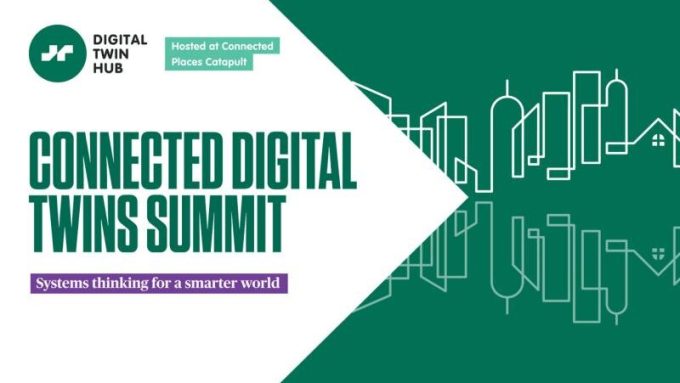Welcome to our latest editorial!
Ryan Goodman, Connected Digital Twins Team Lead, updates us on CReDo, the Apollo Protocol and news from the community.
What are some of the highlights from the last couple of months?
Over the summer, the CReDo (Climate Resilience Demonstrator) project put out an invitation to tender for a supplier to help build out the core functionality to support cross-sector data sharing, system-wide impact modelling and decision support for improved climate resilience of connected infrastructure. I’m delighted to announce that we have awarded this to Computational Modelling Cambridge Ltd (CMCL) for its knowledge graph technology. We will continue to work with the UK Research and Innovation (UKRI) Science and Technology Facilities Council (STFC), who will provide crucial data and cyber security expertise, and with several academic organisations, including Newcastle and Warwick universities to work on asset failure modelling. We’re also taking part in The Alan Turing Institute’s Synthetic Data Sandpit. It’s exciting seeing the progress towards an integrated infrastructure innovation ecosystem that will ultimately strengthen our climate resilience and adaptation.
CReDo is also a great example of where we’re creating collective buy-in and momentum around connected innovation projects across different infrastructure sectors, supporting local, regional and national opportunity and growth.
So much of connecting digital twins is about collaboration, which is why I’m also keen on highlighting the publication of the Apollo Protocol white paper. It is a collaboration between several leading institutions working with digital twins in the manufacturing, tech and build environments. They make the case for a common strategic language and direction and propose the creation of the Apollo Forum to explore a framework that will enable better communication across sectors for people working on digital twins. I think it’s an invaluable milestone on the journey to accelerating digital twin adoption, as so many of industry’s current challenges require the need to work together. That is only possible if we have a common language. You can follow progress right here in the Apollo Protocol Network on the DT Hub.
Another highlight was September’s Strategic Board meeting. It was an opportunity to cement relationships in person, as well as lay out the agenda for the next quarter. Our main goal was to agree the four themes that would be the foundations of Working Groups within the community. This was following an initial consultation with members of the DT Hub, sharing their perspectives on where time and conversations should be committed to understand how we can contribute towards a more connected future. The four chosen themes were Business case and demonstrating value; Open standards and interoperability; Digital skills and capacity building; Governance models and trust.
Finally, we are looking forward to working with our new Advisory Board, a fantastic group of our community members from across the spectrum of government and industry who will support the Strategic Board and ensure that the community’s voice is heard.
Is there anything we should be looking out for in the next few weeks?
One of the enjoyable aspects of the last couple of months has been meeting more of the community in person. We’ve taken the DT Hub on the road and attended events including the Leeds Digital Festival, and heard about digital twins in the marine science and technology sector at the Society of Maritime Industries event in London. We want to continue having a presence at digital twin events as we see the value in expanding our reach and engagement with other sectors. Look out for us at London Build 2022.
We’re also planning more thought leadership around digital twins in our Gemini Calls. At the moment we focus on digital twin research and case studies and what has been effectively tested and trialled, but we want to build on that with more of a feature focused topic of conversation. For example, looking at what kind of sectors are seeing more uptake in digital twins and what’s driving that? Or where are the commercial opportunities? So looking at some of the broader strokes of what is happening as well as the nitty gritty of individual case studies.
What exciting digital twin story have you come across recently?
I came across this really fascinating story about how researchers at the University of Miami, Miller School of Medicine are creating a digital twin that would replace the patient during tests and treatment. They will use wearable digital devices to collect biological, environmental, clinical and behavioural data from patients and then create a model that could be used to test out new treatments before they are tried out on a real life patient. So essentially creating a human digital twin. It has the potential to provide much safer more personalised healthcare for individual patients. It’s incredible to see some of the positive applications digital twins are having outside the built environment and infrastructure that we normally focus on. Read about it here.



Leave a comment